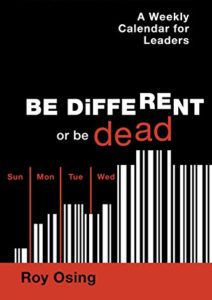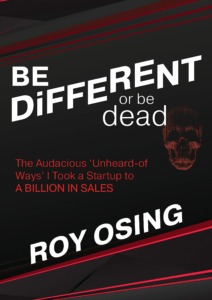Sales organizations are often challenged to be successful.
They craft a strategically brilliant sales plan that would make the pundits proud. It’s replete with industry and competitive analysis, internal strengths, weaknesses and a set of objectives that are time bound with accountabilities assigned.
Then they launch their plan but are disappointed in the results they achieve; they are unable to deliver the results they expect.
And they wonder why they aren’t successful.
But reason is right in front of them.
Success isn’t about the efficacy of the strategy; great plans have been know to fail, and mediocre plans have earned amazing success.
The execution competencies of an organization separate those that achieve the results they intend from those that underperform.
The care factor
And those that standout in the ability to consistently execute have one thing in common: they all have a huge “care factor” in their culture. They understand that people caring about people is a critical ingredient to consistently deliver superlative results.
Care about customers, and they return the favor by buying what you have to sell. And they do it repetitiously. And they tell others.
Care about your sales “warriors” and they not only individually produce tremendous results, but they also work together across the organization to deliver what customers want when they want it.
Effective organizational processes require seamless handoffs, or “touch points” in order to flawlessly deliver products and services to their customers. These are facilitated when people respect and care for the roles and responsibilities of others.
What do sales organizations with a high care factor look like?
— they have caring as a critical component of their stated values; “We care about others” in some manner is explicitly stated.
— their sales strategy is consistent with caring. Their plan is based on serving customers intimately in order to create memorable experiences for them because they know it will result in sales.
And their sales approach is to discover what their clients care about as opposed to only focusing on what they need.
Caring must be measured
— they measure caring outside and inside. Every client and sales employee survey includes questions on caring and the extent to which employees practice the value.
— they have a recruitment process that looks for the caring attribute — it goes well beyond whether a person has demonstrated sales skills.
You can’t teach people how to care; they either have the innate drive to do it or they don’t. They are born with the gene to honestly serve. The human resource effort in sales is geared to discover people with this gene.
— their sales leaders care and they show it relentlessly. Caring starts from the top; it’s what leaders do to build higher levels of employee engagement. And they make it visible to everyone.
— in addition to specific product sales targets, they include caring in their performance and compensation plan and build in specific objectives to measure it.
The basis of measurement is perception; do customers and employees THINK salespeople act in a caring manner; do they think they care?
Sales caregiver stories are told
— their employee communication is overwhelming with stories of sales caregivers — when have you EVER heard “caregiver” linked to sales? — and what they’ve done to live the caring values.
What is talked about is what culture is all about. If the airwaves are consumed with caring stories, what conclusion do people reach?
— they consider caring as the essence of their competitive advantage. You can’t build anything if you don’t care, ergo growing a business requires a strong human feeling element exercised particularly through sales, as being a critical customer-facing team.
Some might consider caring soft, unnecessary and perhaps a bit weird to consider as a critical element to shape the culture of sales. After all, the prime purpose is to push products and services and make a sale, right?
These folks don’t get it.
They don’t get that mind-blowing sales performance that results in a competitive advantage for the organization is the result of individuals working closely together for a common cause.
And that only happens if there is a caring culture at play.



















Comments (1)
this is the best